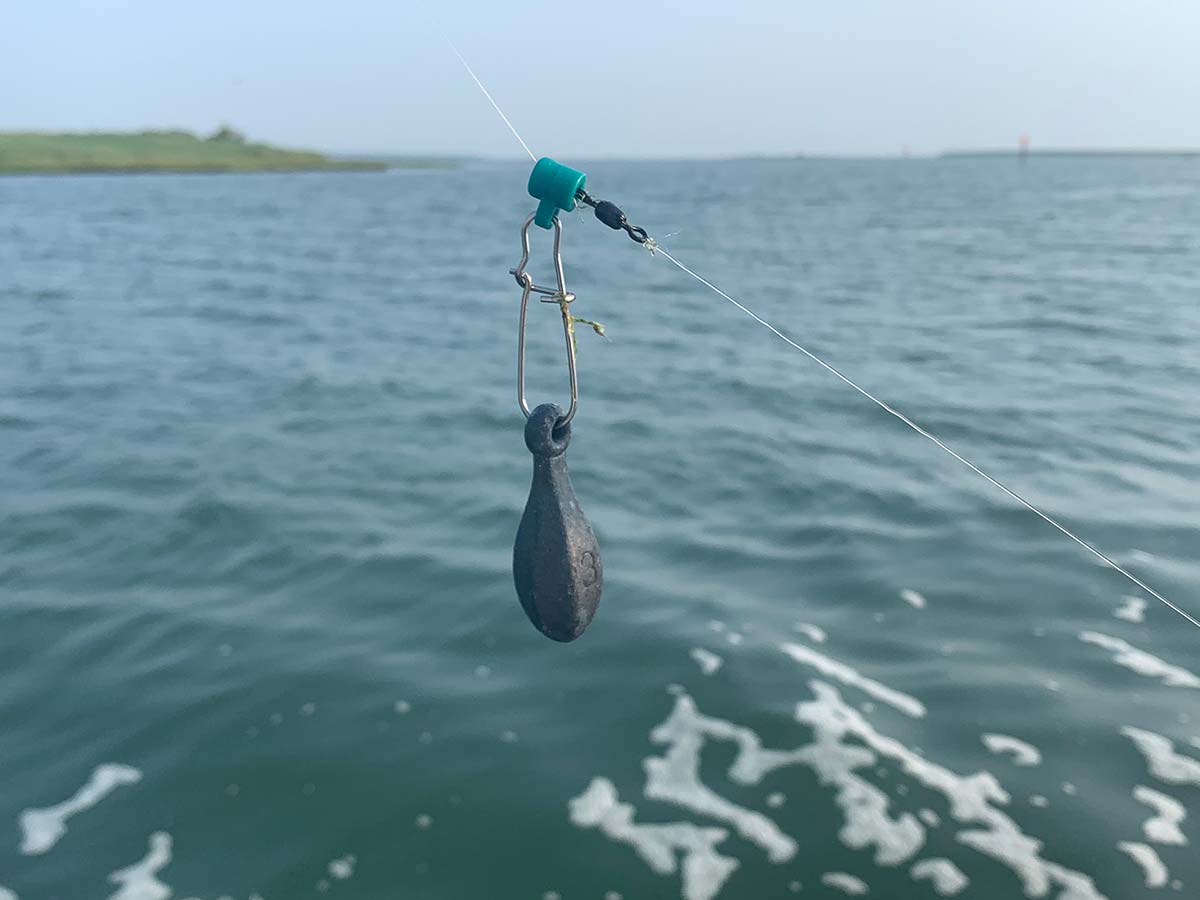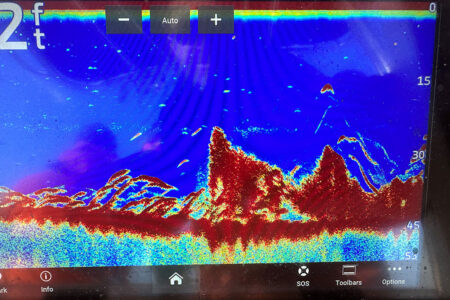
Put this versatile item in your inshore tackle bag.
In baseball, a player that can play most of the positions on the diamond are referred to as “utility players.” In fishing, there is a very basic and humble piece of terminal equipment that could be termed the utility player of inshore, saltwater fishing. The sinker slide, otherwise known as a fishfinder, can be used successfully for a variety of species.
When it comes to fluke, sinker slides are one of my favorite tools. A live bait rig consisting of 30 or 40 pound test and a naked J-hook exist below the swivel, and above the swivel, the sinker slide is put into service. Different size bank sinkers can be utilized and altered throughout the outing. It’s important to make sure the swivel diameter is larger than that of the hole in the sinker slide. This is because the swivel can get jammed and stuck in the plastic slider if not. Furthermore, the plastic slider needs to get checked for its integrity periodically, as braided lines can wear a groove in the plastic.
One of the best attributes of the fishfinder is that if the angler wants to delay setting the hook (think huge bait and letting the fish gulp it down), they can set back and free spool their line. The bank sinker will lie still as the line passes through and the fish can carry off the bait without feeling any resistance. Then the fishermen can slowly reel in the slack before initiating a textbook hook set. Since most fluke fishing is done while drifting, occasionally the line will get wrapped around the sinker slide. When this happens it’s best to retie the rig and dispose of the monofilament leader that gained some twist. Monofilament has memory and will spin up the same way on the next deployment. I have personally taken a pile of doormat fluke over 10 pounds, including my personal best of 15.2 pounds with this set up. It’s simple and deadly.
For striped bass fishermen that fish chunks of bunker or clam, the sinker slide has been a mainstay for decades. The same principals apply; however, the monofilament leader tied to the circle hook is usually heavier. A strategic ‘lob cast’ works great and pins the sinker slide and weight to the swivel until splash down. A bass can pick up the bait and swim freely without detecting the weight. The ability for chunk anglers to fish this way is very attractive. Often Penn “liveliner” or Shimano “baitrunner” reels are employed at their lightest settings in order to keep just enough drag so the line doesn’t backlash. If fishermen prefer to “lock up” their drag systems so the hook automatically sets, sinker slides work perfectly fine also. There has always been a segment of striped bass enthusiasts that prefer to give the fish a few extra seconds of time to eat versus the groups of anglers that like to keep the lines locked up. Those using bunker noggins are often in this contingent. Sinkers slides can also be used for striped bass fishermen that are drifting live bait over structure or rips. Anglers that utilize eels, spots, mullet or any other small fish can use the same basic rigs as described for fluke fishing, but again, with a higher degree of strength in the leader line. Keep in mind you must use circle hooks when bait fishing for stripers.
Most people don’t think of using a sinker slide rig for sea bass, but guess what, they do work. When fishing for fluke or striped bass and there is a change up in species, basic rigs with sinker slides will work fine. Of course, more standard top and bottom rigs are more typical, but sometimes outings take a turn and anglers aren’t prepared with those rigs pre-tied. I can’t count how many times I’ve fished for sea bass with fluke gear and fishfinders as the key component of the terminal rig. At times, I’ve done so in the estuaries and inlets while fishing bridges, jetties and sod ledges, while other times at anchor over ocean structure such as wrecks, rocks or hard bottom.
Sinker slides are made by reputable companies such as Sea Striker and Mustad, among others. They can be found at local tackle shops or online. Over the years, I’ve bought them a handful at a time or by 100-count bags. They range in price from 15 to 30 cents each making them one of the best and most effective bargains in the tackle box!



